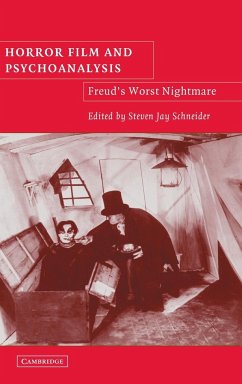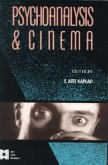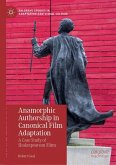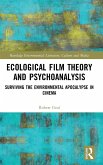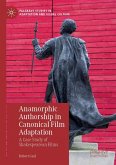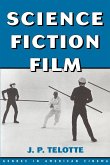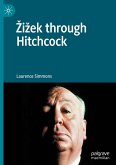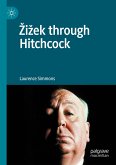Short description/annotation
This volume explores the subject of psychoanalysis and film.
Main description
In recent years, psychoanalytic theory has been the subject of attacks from philosophers, cultural critics, and scientists who have questioned the cogency of its reasoning as well as the soundness of its premises. Nevertheless, when used to shed light on horror cinema, psychoanalysis in its various forms has proven to be a fruitful and provocative interpretative tool. This volume seeks to find the proper place of psychoanalytic thought in critical discussion of cinema in a series of essays that debate its legitimacy, utility, and validity as applied to the horror genre. It distinguishes itself from previous work in this area through the self-consciousness with which psychoanalytic concepts are employed and the theorization that coexists with interpretations of particular horror films and subgenres.
Table of contents:
Preface: what lies beneath(?)33; Robin Wood; Introduction: Psychoanalysis in/and/of the horror film Steven Jay Schneider; Part I. The Question of Horror-Pleasure: 1. 'What's the matter with Melanie(?)33;': reflections on the merits of psychoanalytic approaches to modern horror cinema Cosimo Urbano; 2. A fun night out: horror and other pleasures of the cinema Michael Levine; 3. Excerpt from 'Why Horror(?)33; The New Pleasures of a Popular Genre' (with a new afterward by the author) Andrew Tudor; 4. Philosophical problems concerning the concept of pleasure for future psychoanalytical theories of (the horror) film Malcolm Turvey; Part II. Theorizing the Uncanny: 5. Explaining the uncanny in The Double Life of Véronique Cynthia Freeland; 6. Manifestations of the literary double in modern horror cinema Steven Jay Schneider; 7. Heimlich maneuvers: on a certain tendency of horror and speculative cinema Harvey Roy Greenberg; 8. 'It was a dark and stormy night ...': horror films and the problem of irony Jonathan L. Crane; Part III. Representing Psychoanalysis: 9. 'What does Dr. Judd want(?)33;': transformation, transference and divided selves in Cat People William Paul; 10. 'Ultimate formlessness': cinema, horror, and the limits of meaning Michael Grant; 11. Freud's worst nightmare: dining with Dr Hannibal Lector Barbara Creed; Part IV. New Directions: 12. Doing things with theory: from Freud's worst nightmares to (disciplinary) dreams of horror's cultural value Matt Hills; 13. The darker side of genius: the (horror) auteur meets Freud's theory Linda Badley; 14. Violence and psychophysiology in horror cinema Stephen Prince; Afterword: psychoanalysis and the horror film Noël Carroll.
Hinweis: Dieser Artikel kann nur an eine deutsche Lieferadresse ausgeliefert werden.
This volume explores the subject of psychoanalysis and film.
Main description
In recent years, psychoanalytic theory has been the subject of attacks from philosophers, cultural critics, and scientists who have questioned the cogency of its reasoning as well as the soundness of its premises. Nevertheless, when used to shed light on horror cinema, psychoanalysis in its various forms has proven to be a fruitful and provocative interpretative tool. This volume seeks to find the proper place of psychoanalytic thought in critical discussion of cinema in a series of essays that debate its legitimacy, utility, and validity as applied to the horror genre. It distinguishes itself from previous work in this area through the self-consciousness with which psychoanalytic concepts are employed and the theorization that coexists with interpretations of particular horror films and subgenres.
Table of contents:
Preface: what lies beneath(?)33; Robin Wood; Introduction: Psychoanalysis in/and/of the horror film Steven Jay Schneider; Part I. The Question of Horror-Pleasure: 1. 'What's the matter with Melanie(?)33;': reflections on the merits of psychoanalytic approaches to modern horror cinema Cosimo Urbano; 2. A fun night out: horror and other pleasures of the cinema Michael Levine; 3. Excerpt from 'Why Horror(?)33; The New Pleasures of a Popular Genre' (with a new afterward by the author) Andrew Tudor; 4. Philosophical problems concerning the concept of pleasure for future psychoanalytical theories of (the horror) film Malcolm Turvey; Part II. Theorizing the Uncanny: 5. Explaining the uncanny in The Double Life of Véronique Cynthia Freeland; 6. Manifestations of the literary double in modern horror cinema Steven Jay Schneider; 7. Heimlich maneuvers: on a certain tendency of horror and speculative cinema Harvey Roy Greenberg; 8. 'It was a dark and stormy night ...': horror films and the problem of irony Jonathan L. Crane; Part III. Representing Psychoanalysis: 9. 'What does Dr. Judd want(?)33;': transformation, transference and divided selves in Cat People William Paul; 10. 'Ultimate formlessness': cinema, horror, and the limits of meaning Michael Grant; 11. Freud's worst nightmare: dining with Dr Hannibal Lector Barbara Creed; Part IV. New Directions: 12. Doing things with theory: from Freud's worst nightmares to (disciplinary) dreams of horror's cultural value Matt Hills; 13. The darker side of genius: the (horror) auteur meets Freud's theory Linda Badley; 14. Violence and psychophysiology in horror cinema Stephen Prince; Afterword: psychoanalysis and the horror film Noël Carroll.
Hinweis: Dieser Artikel kann nur an eine deutsche Lieferadresse ausgeliefert werden.

